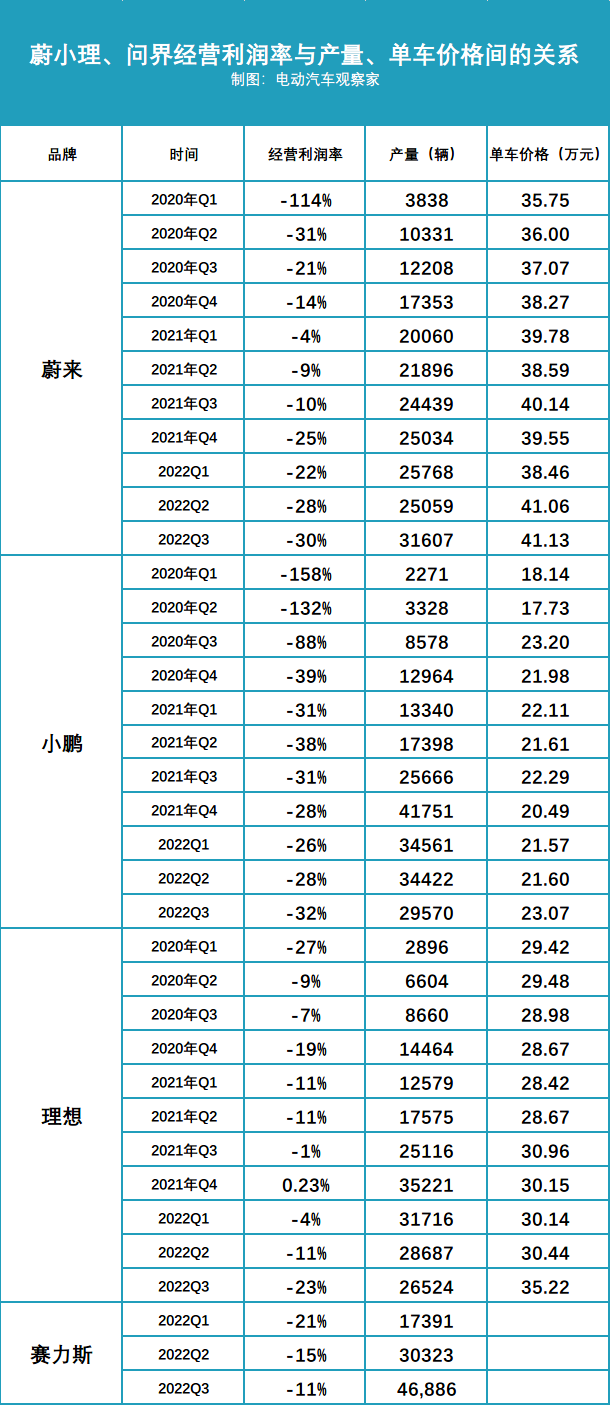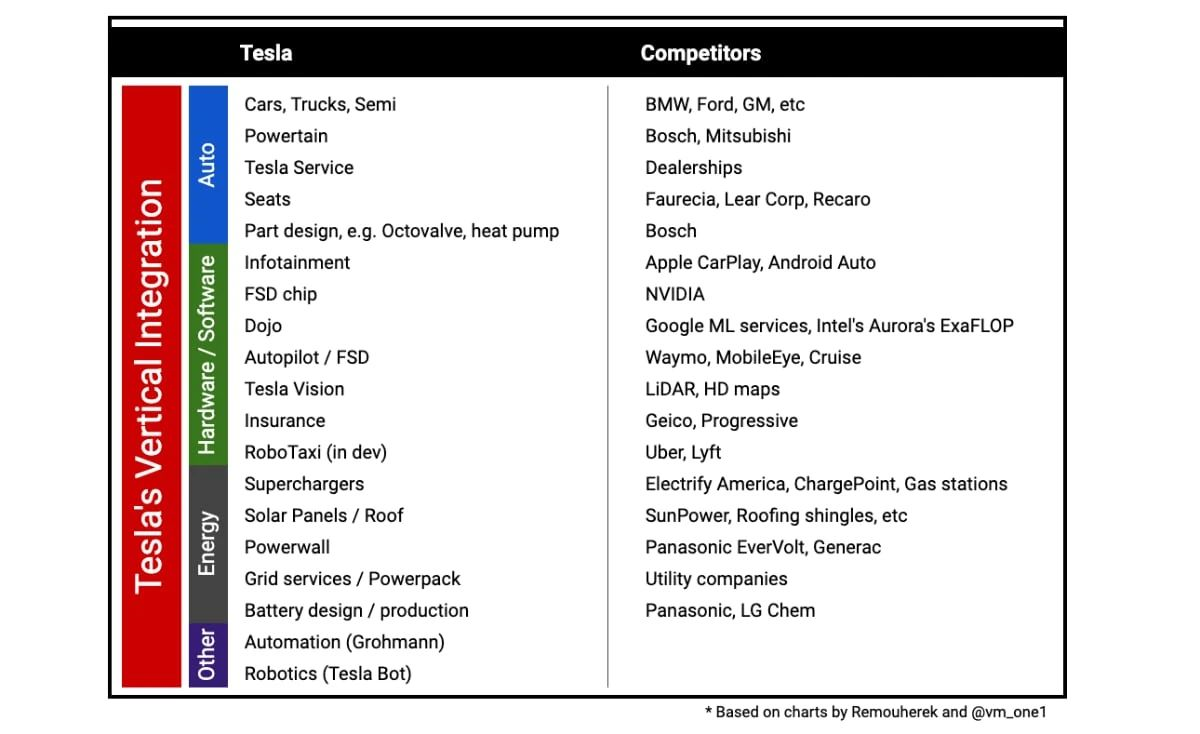Author: Zhu Shiyun
Editor: Qiu Kaijun
It seems that the prices of new energy vehicles will generally rise next year.
Affected by the withdrawal of national subsidies for new energy vehicle purchases and the increase in raw material prices, on December 21st, Ruilong Auto announced that the prices of its cars next year will increase by RMB 5,000-8,000. At the end of November, BYD has already announced that the prices of its Dynasty, Ocean, and DENZA new energy models will increase by RMB 2,000-6,000.
Meanwhile, QuestMobile announced that it will add 10,000 places of state subsidy protection for 2022; the “countdown to new energy subsidies” sign could be seen in major brand stores, which brought the expectation of “price increase” to its fullest in 2023.
However, some are still lowering their prices.
On December 7th, Tesla launched a subsidy benefit of RMB 6,000 for its in-stock vehicles, combined with insurance subsidies of RMB 4,000 in November, a points reward of RMB 20,000, and a referral program for existing customers to bring in new customers, with a total discount of up to RMB 16,500.
Tesla being able to be a “maverick” is natural.
After the ten-year subsidy wave has been ebbed, Tesla is almost the only new energy company in China and worldwide that is highly profitable. Even BYD, who is gradually surpassing Tesla in scale, makes slightly weaker profits compared with it, and WmAuto, for instance, is still losing money.
Off the subsidies, can new energy vehicles make money? How to make money? And, when to make money? By taking Tesla as a reference, we could roughly give some judgments.
Tesla’s Turning Point: 100,000 Vehicles / Quarter
“This number is basically equal to our operating loss, indicating that although NIO is a loss-making company, we suffer losses mainly in R&D expenses, which are for the sake of tomorrow’s possibilities.” NIO co-founder and president Qin Lihong said at the year-end media communication meeting.
“This number” refers to NIO’s plan to invest RMB 3 billion per quarter in R&D. In Q3 2022, NIO’s operating losses were RMB 3.87 billion, of which R&D expenses were nearly RMB 3 billion.
Although the numbers are quite impressive, NIO would not immediately become a profitable company even if it stops investing in R&D; and, on the other hand, its Q3 quarterly sales reached 31,000 vehicles, and its revenue per car reached a historical high of RMB 411,300 (the highest in three years). However, its gross margin of 13.3% and operating profit margin of -30% are at historical lows.It’s not just NIO that sells more and loses more.

XPeng Motors maintained a stable terminal delivery volume of 30,000 in the first three quarters of this year, with operating losses also stable at RMB 2 billion per quarter. Li Auto, a company that emphasizes cost-saving, also reached a delivery volume of 30,000 vehicles per quarter this year, but its operating losses continued to rise, surpassing RMB 2.1 billion. In 2020, behind the sales volume of 42,000 new energy vehicles by Weltmeister, the operating loss reached RMB 2.085 billion, and in Q3 2021, with the sales volume of 47,000 vehicles, the loss was RMB 1.225 billion.
Whether it is XPeng, Li Auto with an average price of 200,000-300,000 yuan, or NIO and Weltmeister with a price of 400,000 yuan, after summarizing the data of car manufacturers that deliver 10,000 to 35,000 vehicles, or even more than 40,000 vehicles per quarter, it is found that the front-end gross profit margin level of car companies will not make a qualitative leap, with insufficient gross profit to cover the research and development and operating expenses that increase with the scale, resulting in selling more and losing more.
Where is the “end point” of losses? At least a scale of 100,000 vehicles per quarter.

In Q3 2019, Tesla’s quarterly delivery volume exceeded 96,000 vehicles, and operating profit became positive.
Afterward, Tesla’s quarterly delivery volume climbed from the base of 100,000 vehicles, reaching 366,000 vehicles in Q3 this year. During this period, it experienced the epidemic, chip shortages, and even the factory shutdown in Shanghai, but its operating profit remained positive, even reaching a high of 17.8%, far exceeding the industry profit rate of 8% in the automotive industry and becoming a “money-making machine.”
It is worth noting that Tesla is a car company that is easy to achieve economies of scale. It only has four models, and as of Q3, the sales ratio of Model3/Y accounted for as high as 94.5%.
Therefore, new energy vehicle companies with more power forms or models may need to set a scale line for profitability higher than 100,000 vehicles per quarter.
In 2021, the production of BYD’s new energy vehicles reached 597,000 units, with a gross profit margin of over 17% in the automotive business, contributing 52.4% of revenue. However, the operating profit margin was only 2.1% and the overall net profit for the electronic and other businesses was 3.045 billion yuan.
In the first half of 2022, the production of BYD’s new energy vehicles reached 645,000 units, with quarterly production exceeding 300,000 units. The overall operating profit margin reached 3.1%, and the net profit exceeded that of the entire previous year, reaching 3.6 billion yuan.
As of Q3 of this year, the production of BYD’s new energy vehicles reached 544,000 units, with an operating profit margin of 6%, which was the highest level since 2019, and a quarterly net profit of over 5.7 billion yuan, surpassing the annual net profit levels of all years since it went public.
In light of this, the plan by major automakers to achieve new energy vehicle sales of 1.5-3 million units by 2025 is probably not only a matter of ambitious transformation but also a realistic consideration of stable profitability.
An investor in NIO estimated that, without considering the development of new platforms, NIO may need a scale of 300,000 units per year to achieve stable profitability. This means that it would need to triple its sales volume based on this year’s sales.
High Productivity Brings High Gross Profit
Although Tesla is known to the public as a technology company that specializes in autopilot, software, and artificial intelligence, its core profitability currently comes from manufacturing.
“High productivity solves a lot of problems. We might have blown up 20 or 30 engines,” Musk said about the Raptor rocket engine.
“So I like high production efficiency because it can compensate for a lot of mistakes. Like any given technology development, if you have low production efficiency, how many iterations can you have, and how much time and progress can you make between each iteration (is limited); but if you have high production efficiency, you can have many iterations, and you can try many things.”
 # How is Tesla’s production efficiency?
# How is Tesla’s production efficiency?
In December of last year, Tesla’s Shanghai factory, designed to have an annual capacity of 450,000 vehicles, achieved a dynamic capacity of 840,000 vehicles per year, with a capacity utilization rate of up to 187%.
In August of this year, the technical transformation of Tesla’s Shanghai factory was completed, which would enable a dynamic capacity of 1.1 million vehicles, second only to Hyundai’s Ulsan factory with a capacity of 1.53 million vehicles.
In Q3, Tesla’s Shanghai factory had a production capacity of more than 750,000 vehicles, which is similar in scale to the largest Volkswagen factory in Wolfsburg, with an annual production of 700,000 to 800,000 vehicles.
However, it should be noted that Tesla’s Shanghai factory covers an area of 860,000 square meters, while Hyundai’s Ulsan and Volkswagen’s Wolfsburg factories have an area of 5 and 6.5 million square meters, respectively.
The high production efficiency maximizes Tesla’s gross profit margin.

In Q3 2016, when Tesla’s quarterly output of Model S/X in the $100,000 price range reached 25,000 vehicles, a historic high gross profit margin of 29.4% was achieved, which was broken five years later. It was not until Q3 2021 that this record was broken:
In Q3 2021, Tesla’s $50,000 price range Model 3/Y accounted for 96% of production, but the production of nearly 240,000 vehicles created a new record for a gross profit margin of 30.5%, which reached 32.9% as production exceeded 300,000 vehicles per quarter thereafter.
Since then, from December 2021 to September 2022, the global average monthly price of lithium carbonate has almost tripled; the Shanghai factory was shut down in Q2 this year; and the Berlin and Texas factories’ production capacity climbed in Q3. Nevertheless, Tesla achieved a gross profit margin of 27.9% in Q2 and Q3 this year.
The gross profit margin record for Toyota, which follows lean production practices, was 20.4% in 2016 and a median of 18% over the past decade.
 # Li Xiang, Chairman and CEO of Ideal Auto, said in a recent interview that “we will always maintain a gross profit margin of 20%, which enables us to make bold investments in research and development, sales and other systems without being restricted by the capital environment.”
# Li Xiang, Chairman and CEO of Ideal Auto, said in a recent interview that “we will always maintain a gross profit margin of 20%, which enables us to make bold investments in research and development, sales and other systems without being restricted by the capital environment.”
This shows that a 20% gross profit margin allows for bold investment and sustained operation; while a gross profit margin of 30% can withstand many risks and maintain profitability.
However, at present, leading new energy vehicle companies need to strive to catch up with Toyota’s gross profit margin. In the first half of 2022, BYD’s automotive gross profit margin was 16.3%, and the median gross profit margin of NIO, XPeng, and Ideal after turning positive is about 15.5%, 11%, and 17.9%, respectively.
“Sleeping in the Factory” Improves Efficiency
In early December, PingWest reported that Zhu Xiaotong, the Tesla Greater China president, will be promoted to the position of Tesla CEO. At the same time, Bloomberg reported that Zhu Xiaotong led a team from the Shanghai factory to Tesla’s factories in California and Texas, and promoted production capacity expansion.
On December 15th, Tesla’s official Weibo account announced that the weekly production capacity of the Texas factory exceeded 3,000 vehicles, eight months after its start of production, while the Shanghai factory only took five months.
The reason why Zhu Xiaotong was given this important mission is jokingly summarized by the industry as “he can sleep in the factory.”
“I lived in Tesla’s factory in Fremont and the one in Nevada for three whole years,” Musk frequently mentioned the “story”: “The reason why I slept on the floor was to make my situation worse than anyone else in the company. Whenever they felt pain, I wanted to endure more pain.”
Similar to Musk, Zhu Xiaotong rented a rental house for less than 2,000 yuan a month around the Tesla Shanghai factory. In order to promote resumption of work and production after April this year, he slept in the workshop for “two months”.
“The Sleeping Factory” has enabled Tesla’s super factories to iterate three times in five years.



The first-generation Gigafactory Fremont, which began production in 2018, was based on the “old plant transformation” of General Motors’ 1962 factory, and its processes and workflows replicated the four-step process of traditional automotive manufacturing, from stamping to welding to painting.
The second-generation Gigafactory in Shanghai, which began production in October 2019, still followed the stamping, welding, and painting process, but its integration was significantly improved, with streamlined workflows and increased efficiency.
For the third-generation Gigafactory in Texas, which began production in April 2022, Tesla broke away from the traditional assembly line model and instead used the “feed-in ports” for automotive “raw materials” such as stamping, welding, batteries, and interior parts, surrounding the final assembly area, the “feed-out port,” while simultaneously “feeding” out cars.
“A 1.2-kilometer-long, 400-meter-wide facility under one roof, from battery production to final assembly without logistics. Once it starts up and runs, it will likely set some new benchmarks,” said Herbert Diess, former chairman of the Volkswagen Group, after visiting the Tesla factory in Texas.

In the “three iterations”, Tesla’s Gigafactories continuously eliminated various processes and links that were not conducive to efficiency in automotive manufacturing.
For example, Musk cited the assembly of the top of the Tesla battery pack, which previously required three fiberglass mats, as the most time-consuming process on the entire battery production line. However, the use of fiberglass mats is disputed, with the NVH team believing they are needed for fire resistance and the battery safety team believing they are shock-absorbing materials.
“We first try to automate the production process, then speed it up, then simplify it, and finally eliminate it. A car requires 10,000 parts and processing steps, and the first principles are very useful,” Musk said.
Engineering constraints or requirements are sure to be foolish to some extent. First, the requirements must be made as smart as possible, otherwise, you will get the “right wrong answer”; second, the requirements must come from people who can explain them, not a department. “After that, reduce steps and reduce parts.”“As a CEO, my most common work is not management, but engineering. My main work in Tesla and spaceX is engineering, design, and production.
Clearly, the changes brought about by electrification and intelligentization are not only on the car products themselves, but also a reconstruction of the existing industry logic. The old “ways” no longer apply to the new game, and managers and companies need to devote themselves wholeheartedly.
Musk once referred to the cooperation model between car manufacturers and component suppliers as “catalog engineering”, meaning that car manufacturers can only select parts from the supplier’s catalog to build a car.
Research by Guidehouse Insights shows that from the 1970s to the 2010s, the share of intellectual property ownership by automakers in their vehicles has dropped from 90% to 50%.
This ratio will be significantly changed again.
Currently, Tesla has vertically integrated multiple core components including the three-electricity system, cockpit, and intelligent driving system, even including automation production lines, insurance, and lithium hydroxide refining facilities. BYD’s battery, power semiconductors, and other core components are also self-supplied; WeRide has gradually ventured into self-research in the fields of electric drive, electric control, chips, and even batteries outside of their self-developed cockpit and intelligent driving software system.
NIO’s Chairman Li Bin stated that batteries account for 40% of total costs, and self-developed batteries are expected to bring an 8% gross margin improvement.
Mercedes-Benz also plans to manufacture electric motors, battery packs, and electronic products internally starting in 2024. Chief Technology Officer Markus Schaefer stated that Mercedes-Benz is still striving to reduce costs by directly obtaining raw materials from the mine.
Compared with the scale advantage of suppliers, there is no clear data support yet about how much profit can be increased by self-developing hardware that requires scale to achieve profitability.
However, Musk stated that the vertical integration process became an asset that enabled Tesla to better understand the supply chain and car manufacturing, thereby designing cars with fewer parts, lower costs, higher performance, and easier integration – Tesla has the courage to lower prices against the trend. For more new energy players, there may be a long “sleeping factory” road to go before making significant profits.”

–END–
This article is a translation by ChatGPT of a Chinese report from 42HOW. If you have any questions about it, please email bd@42how.com.
